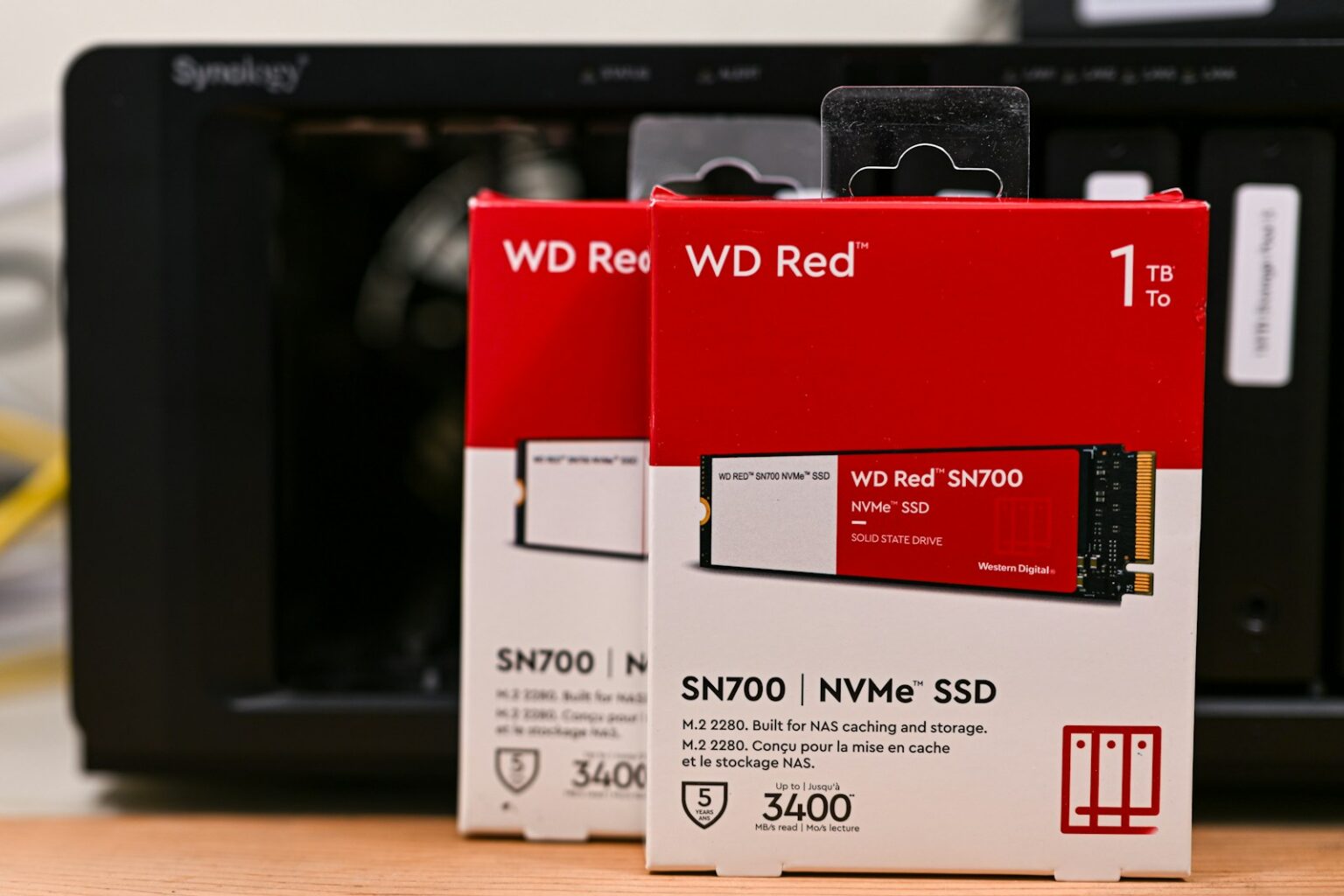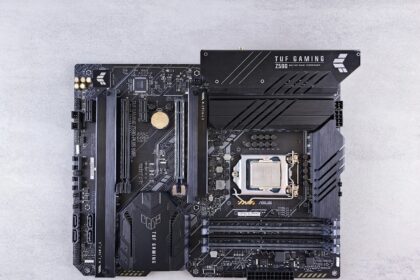Start with the basics: the name most people use refers to the M.2 connector on a motherboard where modern ssds plug in. This small, gum‑stick port holds high-performance storage without cables, so installation stays tidy.
How it works: the protocol that runs over PCIe lets an ssd send many commands in parallel. That design cuts latency and boosts throughput, giving real-world speed gains for app launches and game loads.
Look for the short slot between a CPU and GPU or beneath a slim heatsink cover. M.2 defines the physical module size; it is not the same as the protocol that controls data flow.
Upgrades are simple: modules mount flat with one screw, no SATA power or cables to route. If a board lacks the connector, a PCIe adapter card can host one or more M.2 NVMe drives so your computer can still benefit.
In this guide you’ll learn to identify the connector, match module lengths, and pick compatible devices so upgrades go smoothly in any system.
NVMe, M.2, SATA, and PCIe Explained for a Clear Starting Point
Focus first on how data travels, then on the module that plugs into your board. The non-volatile memory express protocol was built for flash over PCIe to cut latency and handle massive parallel work.
That protocol supports up to 64,000 queues with 64,000 commands each, which helps modern multi-core systems keep lots of tasks moving at once. The result: much lower wait times and higher sustained throughput.
M.2 is a compact form factor. It defines lengths such as 2280 but not which protocol the card uses. Some M.2 cards use SATA, so they behave like older 2.5-inch drives.
SATA tops out near 600 MB/s for sequential transfers. A PCIe interface using x4 lanes lets drives reach several gigabytes per second; Gen4 consumer models hit ~7,000 MB/s while leading Gen5 parts exceed 12,000–14,500 MB/s.
- Protocol vs form factor: protocol controls data flow; form factor controls size and mounting.
- Read the spec: interface type predicts real-world speeds better than shape alone.
| Characteristic | SATA | PCIe (x4) | M.2 Form Note |
|---|---|---|---|
| Typical peak | ~550–600 MB/s | GB/s range (Gen3/4/5 scales) | Defines 2230–22110 lengths |
| Common protocol | AHCI over SATA | Memory Express over PCIe | Can host either SATA or PCIe drives |
| Real-world use | Good for legacy storage | Best for heavy workloads, editors, games | Mounts flat to motherboard with one screw |
What Is an NVMe Slot and What Does It Look Like?
A compact edge socket accepts a gum‑stick module that fits flush to the board. The module slides in at a slight angle, then you press it down and secure it with a single screw at a threaded standoff that matches the module size (for example, 2280).
Keying matters. Notches on the module edge prevent wrong insertion and indicate whether a card uses M‑Key or B+M keying. The narrow PCB carries flash memory and other components, so there are no separate data or power cables to route.
Common motherboard locations and covers
Many boards place one or more connectors between the CPU socket and the primary PCIe graphics slot. Others sit near the chipset or along the lower board edge. Manufacturers often add slim heatsink covers with thermal pads over high‑speed positions; remove the cover, install the drive, then replace it to help with thermals.
- Visually, the connector is a short horizontal socket with a tiny threaded post for the screw.
- Most consumer systems detect an inserted m.2 ssd in firmware; after that, partitioning and formatting in the OS are all that’s needed.
- Look for silk‑screen labels such as “M2_1” near the connector to confirm location.
| Feature | Why it matters | Result |
|---|---|---|
| Form factor | Compact footprint | Fast drives in small cases |
| Keying/notches | Prevents wrong cards | Safer installation |
| Heatsink/thermal pad | Improves heat dissipation | More consistent performance |
Compatibility and Keying: Which SSDs Fit in an NVMe (M-Key) M.2 Slot?
Key cuts at the board edge determine whether a module uses PCIe lanes or the SATA path. B‑Key commonly supports SATA ssds and some PCIe x2 parts. M‑Key provides a full PCIe x4 link used by most nvme ssds and nvme drives.
B+M keyed modules fit both socket styles physically, but actual operation depends on how the motherboard is wired. Some sockets accept both m.2 nvme and m.2 sata devices; others permit only one interface. Always check the motherboard manual before buying drives.
Adapters offer a fallback. PCIe add‑in cards can host extra nvme m.2 modules for systems without onboard m.2 slot options. Performance will follow the host slot’s lane count and generation.
- Quick check: M‑Key = PCIe x4 for top nvme drive speed; B‑Key = SATA or x2.
- Mixing: pair a large traditional sata data drive with a small nvme boot ssd for balance.
- Older systems: firmware may not boot from some nvme drives; use for storage or update BIOS.
| Keying | Typical Interface | Result |
|---|---|---|
| B‑Key | SATA or PCIe x2 | Moderate speeds, wide compatibility |
| M‑Key | PCIe x4 | Highest consumer throughput for nvme ssds |
| B+M | Physical fit for both | Depends on motherboard wiring |
M.2 Sizes and Mounting: 2230, 2242, 2280, 22110
The M.2 form factor keeps the board connector the same while module length and standoff position change. Width stays 22 mm across nearly all consumer parts, so the naming is literal: 2280 means 22 mm by 80 mm.
Most desktop and laptop boards accept 2280. Some also include extra threaded posts for 2230 or 2242. A few workstation-style boards add a 22110 post, but many consumer motherboards do not. Confirm mounting points before buying a longer drive.
- Check for printed markers like “2230/2242/2260/2280” near the connector to find the right screw post.
- Shorter modules suit compact computer designs; longer modules can host more NAND for higher capacity and sustained performance.
- When installing, slide the module into the connector, press the free end down to the matching standoff, then secure the tiny screw without over-tightening.
- Confirm any decorative or thermal cover clears the chosen size and any drive-side heatsink to avoid contact issues.
| Aspect | 2230 | 2242 | 2280 / 22110 |
|---|---|---|---|
| Width (mm) | 22 | 22 | 22 |
| Length (mm) | 30 | 42 | 80 / 110 |
| Common use | Ultra-compact laptops, some devices | Small laptops, embedded systems | Most consumer PCs / some workstations and servers |
| Mounting note | Requires 2230 standoff | Requires 2242 standoff | 2280 usually provided; 22110 rare on consumer boards |
Speed and PCIe Generations: What Your NVMe Slot Can Deliver Today
Bandwidth available from the board’s PCIe lanes determines peak and sustained transfer rates for drives. That ceiling matters more than a drive’s headline numbers when you pick storage for a PC.
PCIe lanes and bandwidth: how x4 translates into transfer speeds
Each PCIe generation roughly doubles per‑lane throughput. An x4 link on Gen3 gives about 4 GB/s, Gen4 ≈8 GB/s, and Gen5 ≈16 GB/s theoretical bandwidth.
Practical note: most consumer ssds use x4, so the slot generation usually sets the transfer speeds you actually see.
Gen 3, Gen 4, Gen 5 realities: slot limits versus SSD specs
Gen4 drives often hit ~7,000 MB/s reads. Cutting‑edge Gen5 parts exceed 12,000–14,500 MB/s in ideal tests.
Plug a Gen5 drive into a Gen3 slot and the slot governs the outcome. You still get lower latency from non‑volatile memory express, but peak rates drop to the slot’s level.
Real-world impact: boot times, game loads, content creation workloads
Compared with sata ssds capped near 550–600 MB/s, modern nvme ssds deliver multi‑GB/s transfers. That boosts boot times, reduces game load screens, and speeds large file moves.
- Creators: faster scrubbing and exports for video and photo projects.
- Gamers: shorter level loads and quicker texture streaming.
- Power users: snappier apps and quicker system updates.
| Interface | Typical peak | Real use |
|---|---|---|
| PCIe Gen3 x4 | ~4 GB/s | Good for modern ssds |
| PCIe Gen4 x4 | ~8 GB/s | Sweet spot for value/perf |
| PCIe Gen5 x4 | ~16 GB/s | Top sequential performance |
| SATA | ~0.55–0.6 GB/s | Legacy compatibility |
Tip: check the motherboard manual for which connectors are Gen4 or Gen5 and how lanes share with GPUs. Thermal limits, small random I/O, and filesystem behavior can keep real transfer speeds below lab figures, but nvme storage still outpaces sata in most workflows.
Conclusion
This final note ties together how protocol, connector, and wiring shape your storage choices.
Remember: the nvme protocol runs over PCIe to use many queues and cut latency, while the M.2 form factor defines the small card that mounts to the motherboard without cables.
Check keying and wiring so a m.2 slot actually supports the interface you expect. PCIe generation and x4 lane counts set upper speed limits; SATA remains near 600 MB/s, so nvme m.2 options usually win for active work.
Match size and standoffs, pick nvme or m.2 sata by application, and use fast ssds for boot and projects while keeping larger sata ssds for bulk storage.
FAQ
What does an M.2 NVMe slot look like on a motherboard?
The M.2 NVMe slot resembles a small gum‑stick connector with a single row of gold pins and a notch or key on one side. A tiny screw standoff secures the drive at the opposite end. You’ll often find it uncovered or under a low-profile heatsink near the CPU or between PCIe slots.
How does the NVMe protocol differ from the M.2 form factor?
NVMe (Non‑Volatile Memory Express) is a fast protocol that uses PCIe lanes and parallel command queues for high throughput and low latency. M.2 is a physical form factor that defines size and connector type. An M.2 slot can accept both NVMe and SATA SSDs, but only NVMe uses the PCIe interface and the NVMe protocol.
Can a single M.2 slot support both SATA and PCIe NVMe drives?
Some M.2 slots support both M.2 SATA and M.2 NVMe, but not simultaneously. The slot’s wiring and the motherboard firmware determine which interface is active. Check the motherboard manual to confirm whether a given slot supports SATA, PCIe x2/x4, or both.
What are B‑Key, M‑Key, and B+M Key notches?
Keying refers to the notch pattern on an M.2 edge connector. B‑Key fits up to x2 PCIe or SATA, M‑Key supports x4 PCIe (ideal for NVMe), and B+M Key physically fits more sockets but may limit lane count. Match the drive’s key to the slot to ensure compatibility.
How do M.2 sizes like 2230, 2242, 2280, and 22110 affect compatibility?
The first two digits (22) indicate width in mm; the last two digits indicate length. Most consumer NVMe SSDs use 2280 (22×80 mm). Motherboards provide multiple standoff positions for different lengths—ensure the board supports your drive’s length before installing.
What role do PCIe lanes and generations play in NVMe performance?
NVMe performance depends on PCIe lane count (x2, x4) and generation (Gen3, Gen4, Gen5). x4 Gen3 gives roughly 3.5 GB/s, x4 Gen4 up to about 7 GB/s, and Gen5 doubles again in theory. The slot and CPU/chipset must support the generation to reach those speeds.
Will an NVMe SSD work in any PCIe slot with an adapter?
Yes, you can use an M.2‑to‑PCIe adapter card to install an NVMe drive in a full‑size PCIe x4/x16 slot. That’s a common solution for older motherboards without M.2 slots. Make sure the slot provides enough lanes and that the case has clearance and cooling for the drive.
How does choosing NVMe over SATA SSDs affect real‑world tasks?
NVMe drives cut load and boot times and speed large file transfers, video editing, and other data‑heavy tasks thanks to higher throughput and lower latency. For everyday office work, the difference is less dramatic, but content creators and gamers benefit most from NVMe speeds.
Can multiple M.2 drives share bandwidth on a motherboard?
Yes. Some motherboards multiplex PCIe lanes or route lanes through the chipset, so populating multiple M.2 slots can reduce available lanes per slot. This can lower peak speeds if the board shares lanes with graphics or other devices—check the board’s lane allocation chart.
How do heat and cooling affect NVMe SSD longevity and speed?
NVMe drives can throttle under sustained load if temperatures rise. Heatsinks, thermal pads, or airflow over the M.2 slot help maintain performance and longevity. Many motherboards include M.2 shields or dedicated heatsinks for this reason.
Are there differences between consumer and enterprise NVMe drives?
Yes. Enterprise NVMe SSDs often use higher endurance flash, power‑loss protection, and firmware tuned for consistent performance under heavy, sustained workloads. Consumer drives focus on burst performance, cost, and features like DRAM or host memory buffer support.
How do I identify if my slot is M‑Key for NVMe use?
Visually inspect the notch on the M.2 socket—an M‑Key notch sits toward one edge, leaving a specific cutout pattern. The motherboard manual will explicitly state M‑Key or NVMe support. If in doubt, consult the board’s specs from manufacturers like ASUS, MSI, Gigabyte, or ASRock.
Can I boot from an NVMe drive in older systems?
Many modern motherboards support NVMe booting natively. Older systems may need a UEFI firmware update or may not support booting from NVMe at all. Using an NVMe as a secondary drive for storage via a PCIe adapter is still possible even if boot support is absent.






















